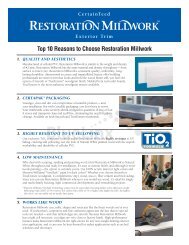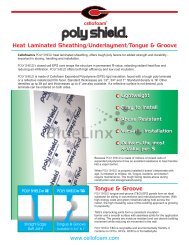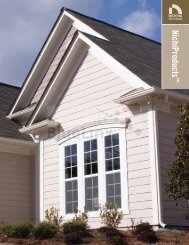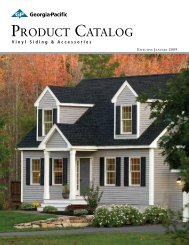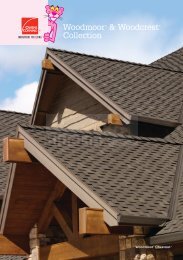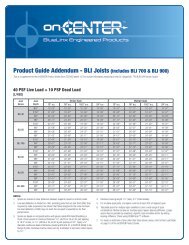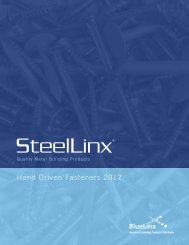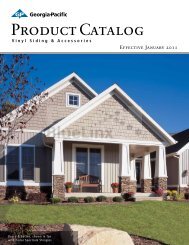Roseburg Hardwood Panels Brochure - BlueLinx
Roseburg Hardwood Panels Brochure - BlueLinx
Roseburg Hardwood Panels Brochure - BlueLinx
You also want an ePaper? Increase the reach of your titles
YUMPU automatically turns print PDFs into web optimized ePapers that Google loves.
MaintainingQualityProper handling and storageBetween the time panels are manufactured and put into their final application, there are many opportunities forhardwood plywood panels to be damaged. The following handling and storage tips should be observed at every stepalong the route to ensure the panels reach their final destination unscathed.HandlingMinimize Movement – The best way to minimize handling damage is by handling the panels as little as possible. Planyour warehousing and process flow operations to minimize the need to handle the panels.Proper Strapping – When you do need to move panels, make sure that they are properly secured and strapped. Thiswill minimize the chances that the units will unexpectedly shift during transport.Dunnage – Keep the panels properly protected until they are ready for use on the job site. The proper dunnage willabsorb many handling dings and nicks before they reach the panels.Training – Properly trained employees are your best defense against damage. Make sure all employees are trainedin the proper and safe use of fork trucks, pallet jacks, and other handling equipment. If your employees are carefuland know how to handle panels, your panels will stay in good shape.StorageProper Stacking – Proper stacking is vitally important to protecting panels. Make sure you maintain clean stackswith no protruding edges. When stacking units, keep similar lengths of similar product together and maintain properalignment and quality of stacking sticks to avoid bending or flexing panels. The sticks should be thick enough to allowfork truck tines to pass unobstructed between units.Temperature – Wood is a natural material and is negatively affected by extreme swings in temperature. Also,wood stored in direct sunlight may heat up enough to warp. To minimize damage, storage temperatures should bemaintained between 60–90ºF.Moisture – Extreme swings in humidity and direct contact with water can both damage the appearance and performanceof hardwood panels. It is extremely important to store panels in a climate controlled environment to eliminate theimpacts of moisture. The storage environment’s relative humidity should mimic the anticipated service environment,usually 30–55% RH.Light – Although most wood will change color upon exposure to sunlight, the effect is more pronounced in some of thespecies commonly used in hardwood panels. Cherry, for example, will begin to change color within a few hours ofexposure to sunlight. For that reason, panels should be neatly stacked and covered during storage.Coverings – <strong>Roseburg</strong>’s hardwood plywood is packaged in attractive unit covers that also help protect the panels fromdamage. Each panel is end stamped with the grade, species and standards. Special services, such as barcoding are alsoavailable upon request.Delivery and FabricationAcclimation Period – Do not deliver panels to the job site until they are needed and the site is ready, but allow at least48 hours for the panels to acclimate to the use environment before installation. <strong>Panels</strong> that aren’t given enough timeto acclimate on the job site prior to fabrication may warp during use.MachiningThe panel is constructed to provide the best possible machining results when sawn, routed, shaped and drilled. Propernails, screws and other fasteners may be placed near the edge without splitting the panel.FinishingIt is recommended that fine-grit sandpaper and sanding sealer be used prior to staining. Because hardwoods reactdifferently to certain finishes, a test sample should be done first, to determine the desired appearance before finalfinishing.19




